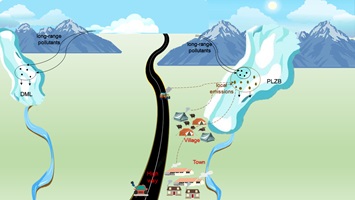EN25053Adsorption-based removal of PFASs from water: mechanisms, materials and future perspective
Environmental context. Per- and polyfluoroalkyl substances (PFASs), often called ‘forever chemicals’, have contaminated water sources worldwide and pose serious health risks. This study reviews how adsorption technologies – using materials such as activated carbon and advanced nanomaterials – can effectively capture and remove PFASs from water. These insights support the development of safer, more efficient treatment solutions and guide future policies to protect public health and the environment. (Image credit: Hongjin Tong.)














